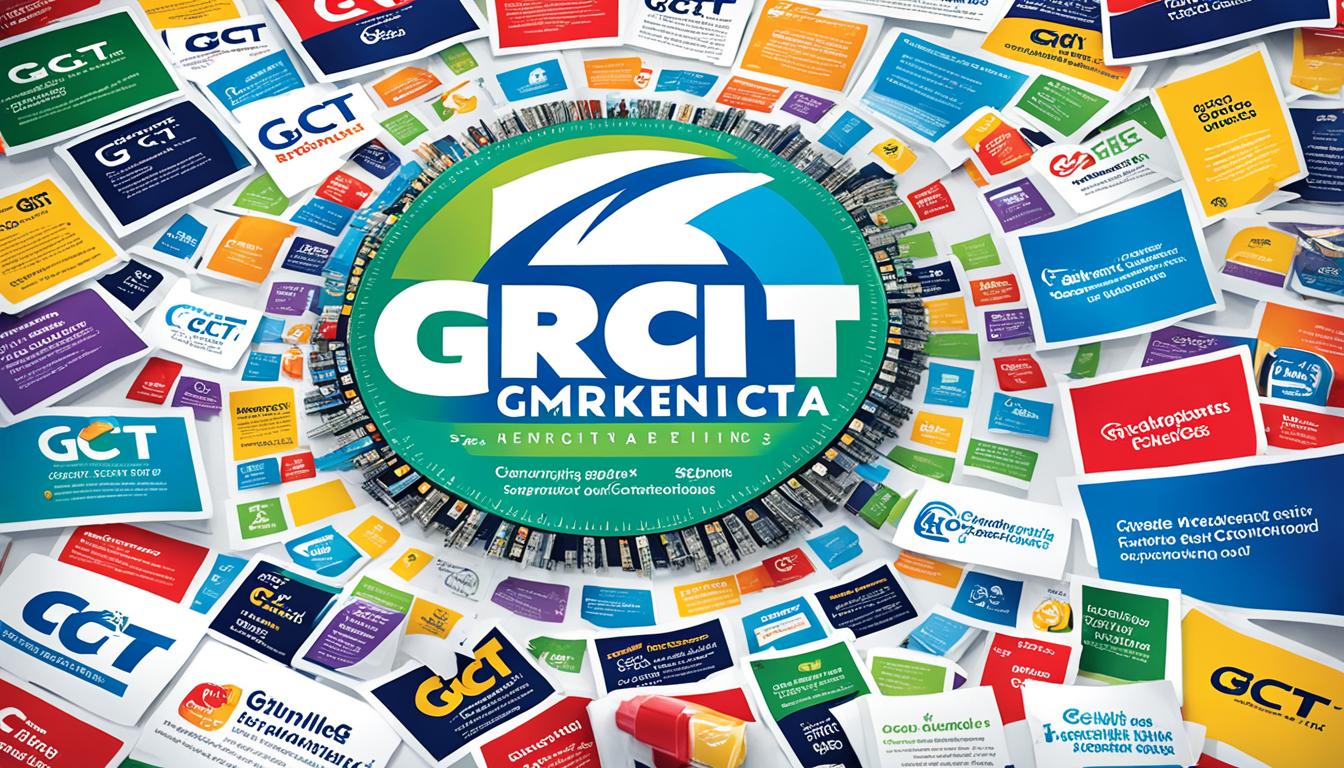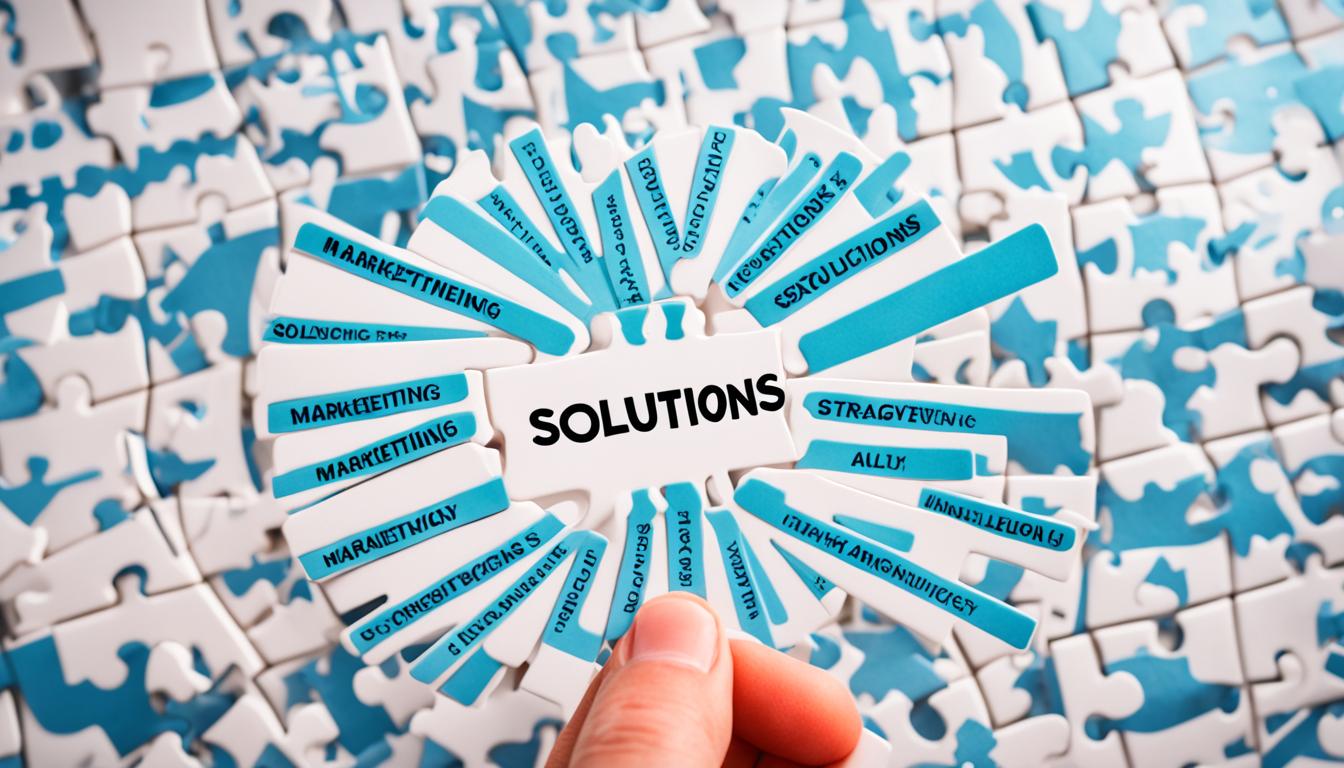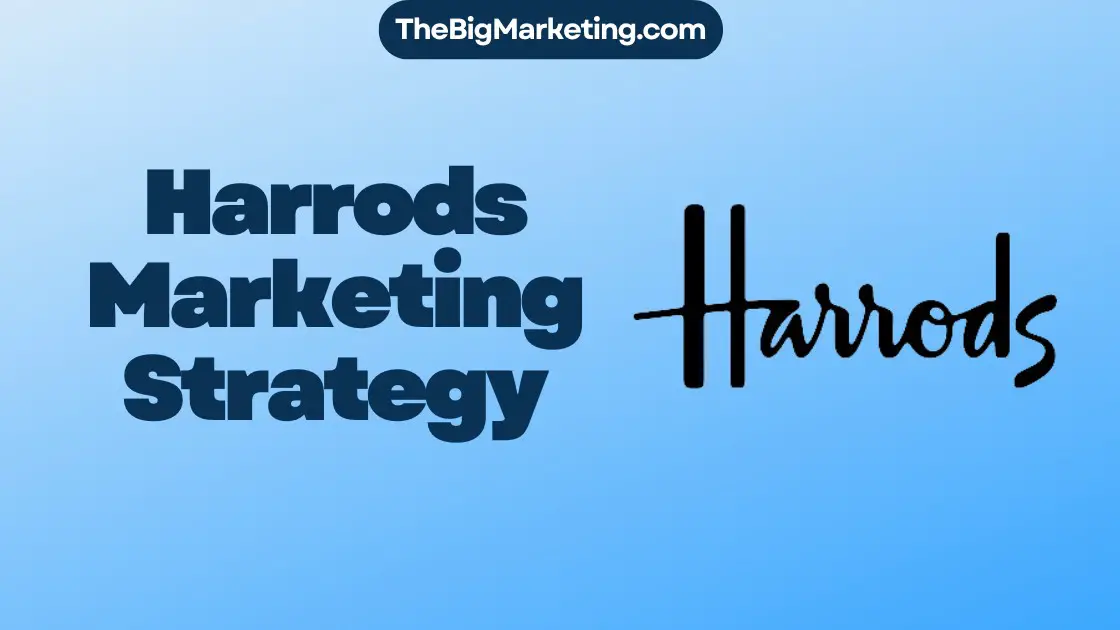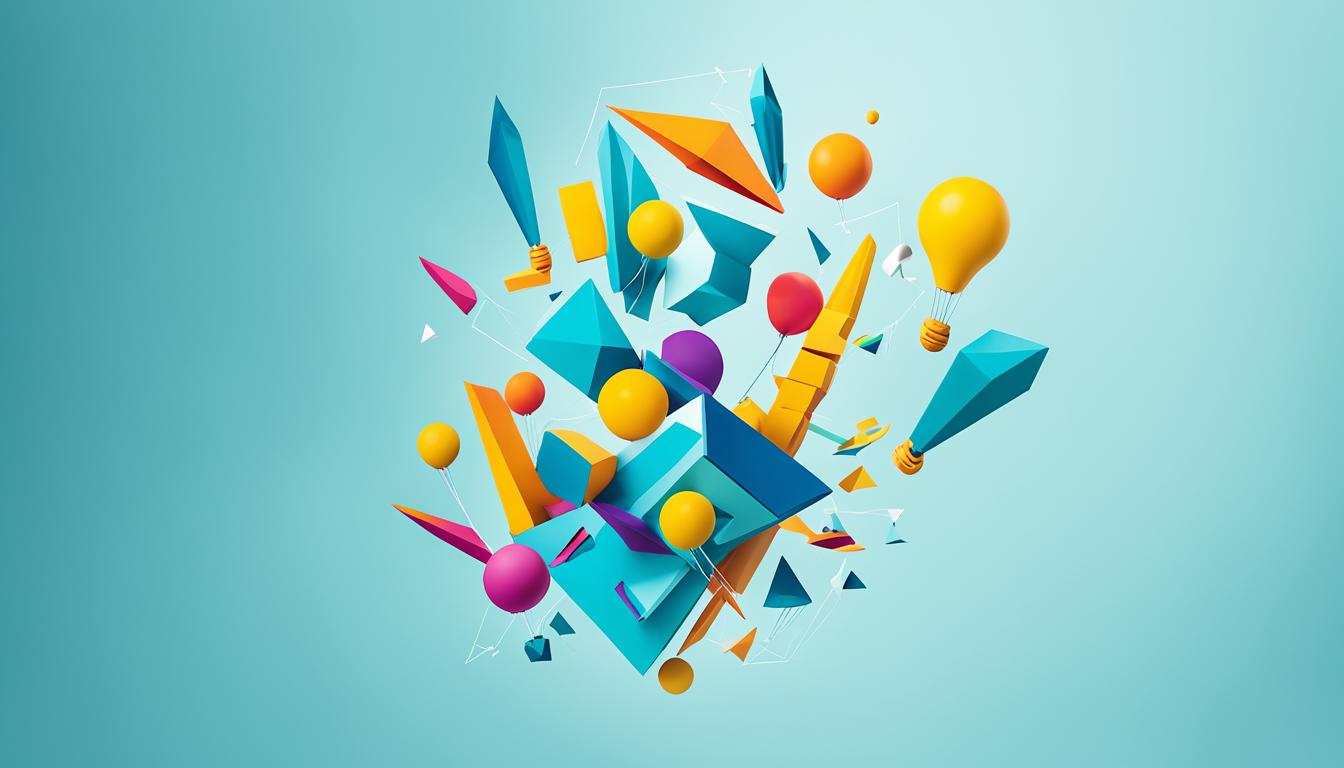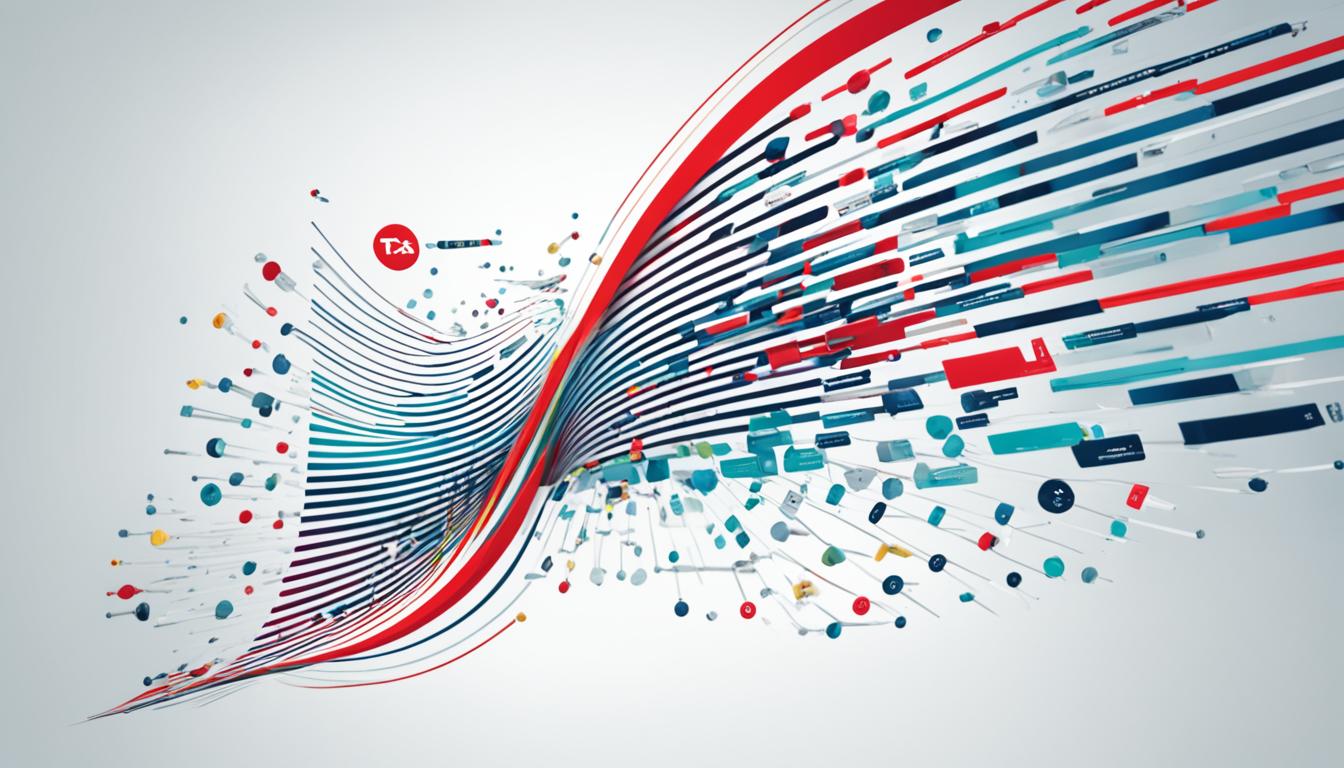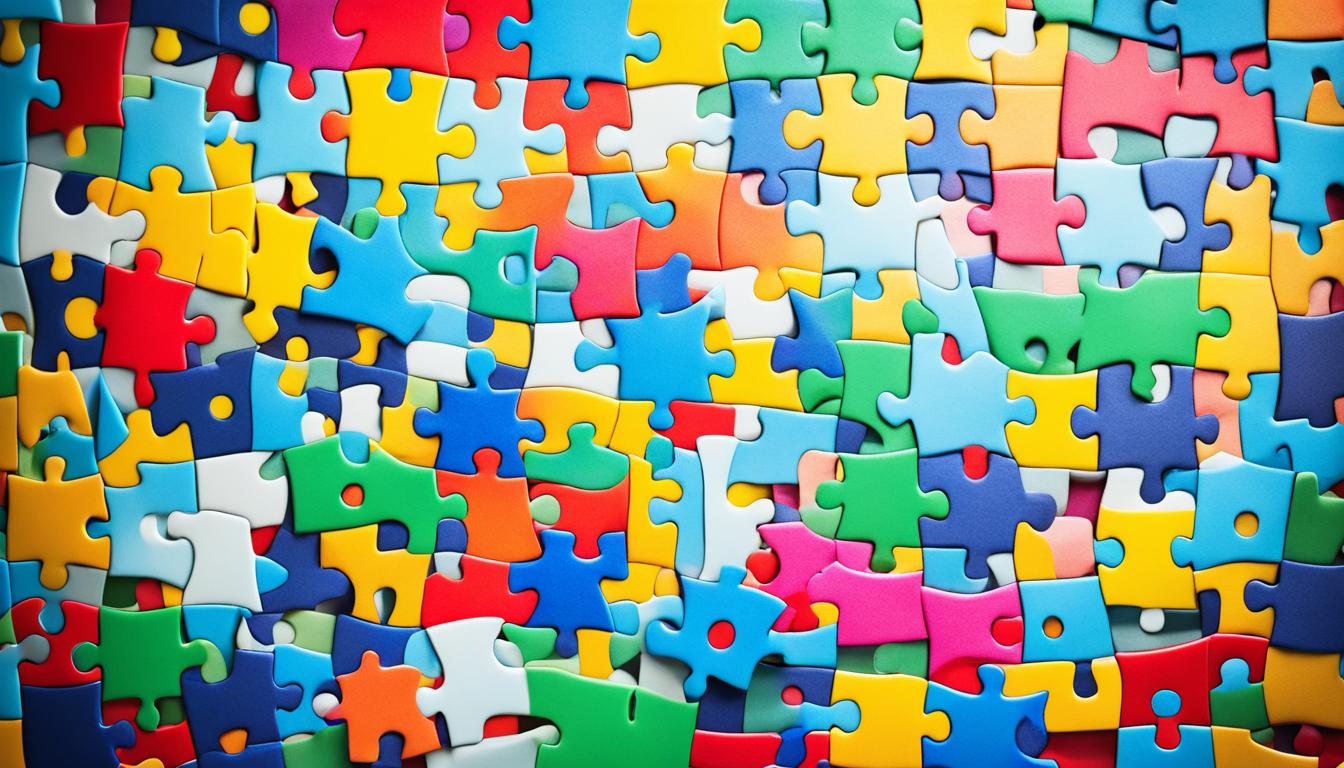A hero image is the first photo, graphic, or video that people see on a web page. It serves as a powerful tool in marketing, designed to grab attention, convey a company’s message, and make a strong first impression. The hero image is a key element in web design as it sets the tone for the entire website and plays a crucial role in engaging and converting visitors.
Key Takeaways:
- A hero image is the first visual element that visitors see on a web page.
- It is designed to capture attention, convey a company’s message, and make a strong first impression.
- The hero image is a crucial element in web design, setting the tone for the website and engaging visitors.
- Optimizing hero images is important for fast loading times and an enhanced user experience.
- Selecting the right hero image can significantly impact website traffic and conversions.
The Importance of a Hero Image in Web Design
When it comes to web design, the hero image plays a crucial role in capturing the attention of visitors and creating a memorable first impression. A hero image is the large, visually striking header image that appears prominently at the top of a website’s homepage. It serves as an introduction to the brand, conveying its identity, message, and values.
The website hero image is like the virtual storefront of a business, acting as a powerful visual representation that entices visitors to explore further. In a matter of seconds, it has the potential to pique interest, showcase products or services, and establish an emotional connection with the audience.
Imagine landing on a website’s homepage and being greeted by a captivating hero header image that aligns with your desires and aspirations. It creates an instant sense of relevance and resonance, compelling you to delve deeper into the site and discover what it has to offer. On the other hand, a poorly chosen or poorly executed homepage hero image can have the opposite effect, leaving visitors unengaged and likely to bounce off the page.
A well-designed hero image should not only grab attention but also convey the core message and values of the brand. It should align with the website’s overall aesthetics, complement the content, and evoke the desired emotions. The hero image serves as a visual anchor that sets the tone for the entire website, guiding visitors’ expectations and influencing their perception of the brand.
For example, a lifestyle brand may use a hero image featuring vibrant colors, happy people, and a dynamic composition to convey a sense of energy, adventure, and positivity. On the other hand, a luxury brand may opt for a more minimalistic hero header image that exudes elegance and sophistication.
Take a look at the example hero image below:
As you can see, the hero image is visually appealing, capturing attention with its vibrant colors and dynamic composition. It showcases a product in use, allowing visitors to visualize themselves experiencing the benefits it offers. This type of website hero image can effectively drive engagement and conversions by drawing visitors further into the site and encouraging them to explore the brand’s offerings.
In conclusion, the hero image holds significant importance in web design. It serves as the website’s introduction, conveying the brand’s identity, message, and values. A well-designed hero image has the power to capture attention, create a strong first impression, and drive user engagement. Conversely, a poorly chosen or executed hero image can negatively impact the user experience and hinder website performance.
Hero Image Dimensions and Sizes
When it comes to selecting the perfect hero image for your website, considering the dimensions and sizes is crucial. Ensuring optimal display across different devices and screen resolutions is essential for creating a visually appealing and engaging user experience.
Full-screen hero images are commonly used to make a bold impact and set the tone for your website. They typically have an aspect ratio of 16:9 and are recommended to be 1,200 pixels wide. This allows the image to span the entire width of the screen, captivating the attention of your visitors.
If you prefer a more compact hero image, banner hero images are a popular choice. These images are often placed at the top of a webpage and have an ideal size of 1600 x 500 pixels. This size provides a great balance between visual impact and content placement.
It’s important to note that file size plays a significant role in website performance. Compressing your hero images can help ensure faster loading times and prevent potential delays. By optimizing the file size without compromising image quality, you can provide a seamless user experience for your visitors.
| Hero Image Type | Recommended Dimensions |
|---|---|
| Full-Screen Hero Image | 16:9 aspect ratio, 1,200 pixels wide |
| Banner Hero Image | 1600 x 500 pixels |
Choosing the right dimensions and sizes for your hero images ensures that they are visually impactful and optimized for different devices and screen resolutions. By paying attention to these details, you can enhance the overall user experience and make a lasting impression on your website visitors.
Creating a Hero Image with HTML and CSS
HTML and CSS are essential coding languages for creating and styling compelling hero images on web pages. HTML provides the structure for embedding the image, while CSS adds visual effects and styling to enhance its appearance and impact. When designing a hero image, it is crucial to consider both HTML and CSS elements to ensure a centered and responsive design that engages users effectively.
In HTML, you can use the <img> tag to embed the hero image into your web page. Set the source attribute (src) to the URL of the image file. Additionally, include meaningful alt text that describes the image content. This alt attribute is crucial for accessibility purposes and can also contain the relevant keywords, such as “hero image HTML”.
Here’s an example of how to embed a hero image using HTML:
Now that you have embedded the hero image, you can further enhance its visual appeal using CSS. With CSS, you can apply various styles, such as borders, shadows, and animations, to make the hero image stand out. You can also control the placement and size of the hero image using CSS properties.
To ensure the hero image is centered on the web page, you can use CSS flexbox or grid layout. By applying the appropriate flexbox or grid properties to the container element of the hero image, you can achieve a centered and responsive design that adapts to different screen sizes.
Consider the following CSS code to center the hero image:
.hero-container { display: flex; justify-content: center; align-items: center;}
This CSS code snippet creates a container with the class “hero-container” and uses flexbox to center the hero image both horizontally and vertically.
By combining HTML and CSS effectively, you can create visually stunning hero images that capture attention and engage users. However, it is essential to ensure that the text within the hero image remains readable and concise. Experiment with different HTML and CSS elements to find the perfect balance between aesthetics and functionality.
Testing and Optimizing Hero Images
Testing and optimizing hero images play a crucial role in maximizing user engagement and driving conversions on websites. By conducting A/B testing, you can compare different hero images to determine their impact on user behavior. This process allows you to identify the most effective design and content elements for your hero images and make data-driven decisions to improve their performance.
When testing hero images, it is important to consider various factors that can influence user engagement. Here are some key considerations:
Load Times
The load times of hero images are critical for maintaining a positive user experience. Slow-loading images can lead to frustrated visitors who may abandon the site. Conduct tests to ensure that your hero images are optimized for fast loading across different devices and internet connections.
Visual Appeal
The visual appeal of a hero image plays a significant role in capturing and retaining user attention. Test different visual styles, colors, and compositions to determine which ones resonate best with your target audience and align with your brand identity.
Relevance to Content
Ensure that your hero images are highly relevant to the content or message conveyed on the website. Test different images that communicate the essence of your brand or product effectively to create a strong connection with visitors.
Alignment with Brand’s Visual Identity
Test hero images that align with your brand’s visual identity, such as colors, typography, and overall design. Consistency in visual elements reinforces brand recognition and trust.
Continuous testing and optimization are key to improving the performance of hero images. Monitor user behavior, conversion rates, and engagement metrics to gain insights into the effectiveness of different hero images. Make data-informed decisions to refine and optimize your hero images over time.
Optimizing hero images is an ongoing process that involves analyzing data, testing new ideas, and iterating based on user feedback. By focusing on testing and optimization, you can create hero images that effectively engage users, drive conversions, and contribute to the overall success of your website.
| Benefits of Testing and Optimizing Hero Images | Challenges of Testing and Optimizing Hero Images |
|---|---|
| – Improved user engagement | – Choosing the right metrics to measure |
| – Increased conversions | – Balancing visual appeal and load times |
| – Enhanced brand messaging | – Gathering sufficient data for reliable conclusions |
| – Better understanding of user preferences | – Designing impactful A/B tests |
| – Higher click-through rates | – Incorporating valuable user feedback |
The Role of Hero Images in Content Marketing
Hero images play a significant role in content marketing by capturing the audience’s attention and conveying the central message or theme of the content. These visually impactful elements enhance user engagement and increase conversion rates by creating a strong first impression and evoking emotions. Whether promoting products, services, events, or any other content, hero images have the power to make a lasting impression on viewers.
Enhancing User Engagement
Hero images are strategically placed at the top of web pages to immediately grab the attention of visitors. By featuring compelling visuals that align with the content, hero images create a visual narrative that draws users in and entices them to explore further. When properly executed, these captivating hero images captivate audiences and entice them to read, watch, or interact with the content.
Increasing Conversion Rates
A well-designed hero image can significantly impact conversion rates. With a strong visual appeal and relevant content, hero images create an emotional connection with viewers, motivating them to take action. This action could be signing up for a newsletter, making a purchase, or engaging with a call-to-action button. The hero image sets the tone for the entire user experience and greatly influences the decision-making process.
Creating a Memorable First Impression
Hero images are the first thing users see when they land on a web page. This initial visual encounter is crucial in shaping their perception of the brand or content. By utilizing compelling visuals, businesses can create a positive and memorable first impression that resonates with their target audience. The hero image serves as a visual representation of the brand’s identity and values, leaving a lasting impact on users.
Evoking Emotions
Hero images have the power to evoke emotions and create a connection with viewers. Through carefully selected visuals and design elements, hero images can elicit excitement, curiosity, inspiration, or any other desired emotion. By creating an emotional response, businesses can establish a stronger connection with their audience and drive engagement.
Overall, hero images play a crucial role in content marketing. They capture attention, convey the central message or theme, enhance user engagement, and increase conversion rates. When used effectively, hero images create a visually impactful experience that leaves a lasting impression on the audience, promoting stronger brand engagement and driving desired actions.
Different Types of Hero Images
Hero images play a critical role in capturing the attention of website visitors and conveying a brand’s message effectively. As a key element in web design, hero images come in various types, each serving a specific purpose and engaging users in different ways. Understanding the different types of hero images can help businesses choose the most suitable format to showcase their products, evoke emotions, or provide valuable information.
Product Photography
Product photography is a popular type of hero image that focuses on showcasing products and highlighting their features. These high-quality images allow businesses to make a visual impact, emphasizing the uniqueness and desirability of their offerings. By presenting products in an appealing and professional manner, product photography hero images can create a sense of trust and intrigue, encouraging visitors to explore further and potentially make a purchase.
Sizzle Reels (Videos)
Sizzle reels, also known as hero videos, are dynamic and engaging hero images that capture attention through motion and storytelling. These short videos are often used to create a powerful visual and emotional impact, effectively conveying a brand’s message or showcasing its personality. Sizzle reels allow businesses to connect with their audience on a deeper level by immersing them in captivating visuals and compelling narratives.
Images with Emotional Appeal
Hero images with emotional appeal tap into the power of emotions to create a strong connection with website visitors. These images aim to evoke specific feelings such as joy, excitement, awe, or empathy. By triggering an emotional response, businesses can forge a memorable and impactful first impression, increasing the chances of user engagement and conversion. Images featuring happy customers, vibrant scenes, or touching moments can effectively convey the desired emotions and resonate with the target audience.
Information-Driven Images
Information-driven hero images are designed to provide valuable information or statistics that add value and engage visitors. These images often contain charts, graphs, or visually appealing data representations that convey useful insights or highlight key points. Information-driven images can be particularly effective in industries such as finance, technology, or education, where data visualization and knowledge sharing play a crucial role in attracting and retaining users.
Ultimately, the choice of hero image type depends on the brand’s objectives, target audience, and the specific message it wants to convey. Using a combination of these types or experimenting with different formats can help businesses find the most effective hero image strategy to enhance user engagement and drive conversions.
Best Practices for Creating Effective Hero Images
When it comes to creating hero images, following best practices is crucial to ensure their effectiveness and impact on your website. By implementing these practices, you can enhance user engagement, improve conversions, and create a visually appealing experience for your visitors. Here are the key best practices for creating effective hero images:
1. Use High-Resolution Images
To create a visually stunning hero image, it is essential to use high-resolution images. High-resolution images not only look better but also provide more clarity and detail. They contribute to an overall professional and polished appearance, leaving a positive impression on your audience. Be mindful of the file size and format to avoid compromising the loading speed of your website.
2. Optimize Image Size for Fast Loading Times
Optimizing your hero image size is crucial for ensuring fast loading times. Large image files can significantly impact your website’s performance and lead to frustrating user experiences. Aim to strike a balance between visual quality and file size by compressing your images without compromising their visual appeal. This will ensure your hero images load quickly and efficiently, improving the overall user experience.
3. Ensure Relevance to the Content or Topic
Relevance is key when selecting a hero image for your website. Your hero image should align with the content or topic it represents and provide a clear visual connection to your brand. Choose an image that complements your message, enhances the overall presentation, and resonates with your target audience. This will help establish a strong connection and captivate the attention of your visitors.
4. Incorporate Emotional Appeal
Emotional appeal plays a crucial role in connecting with your audience and making a lasting impression. Consider the emotions you want to evoke in your visitors and select a hero image that aligns with those emotions. Whether it’s excitement, trust, or happiness, the right image can evoke and reinforce the desired emotional response, making your website more memorable and engaging.
5. Align with the Brand’s Visual Identity
Your hero image should align with your brand’s visual identity and convey your brand’s aesthetics. Consistency is key in establishing a strong brand presence and creating a seamless user experience. Ensure that the style, color scheme, and overall tone of the hero image align with your brand’s visual guidelines. This will reinforce brand recognition and create a cohesive and harmonious website design.
6. Test Different Hero Images
Testing different hero images can provide valuable insights into which designs and content resonates best with your audience. A/B testing can help identify the most effective hero image to drive user engagement and conversions. Analyze metrics such as click-through rates, time spent on the page, and bounce rates to evaluate the performance of different hero images. Continuously iterate and optimize to achieve the best results.
By following these best practices, you can create effective hero images that capture attention, engage users, and drive conversions on your website.
Examples of Effective Hero Images
Effective hero images can be found across various industries and websites. These examples showcase the diversity and creativity in using hero images to engage and convert visitors.
1. Target
Target’s homepage hero image is a prime example of showcasing products with a clear call to action. The image captures attention and effectively conveys the brand’s message, enticing visitors to explore further.
2. Chase
Chase’s hero image focuses on simplicity and functionality. With a clean design and minimalistic approach, the image creates a strong visual impact and aligns with the brand’s identity.
3. Delta
Delta’s hero image highlights the value proposition of their premium offering. The image showcases comfort, luxury, and convenience, appealing to their target audience and creating a desire to choose Delta for their travels.
4. Roxy
Roxy’s hero image creates an emotional connection with the target audience. The image evokes a sense of adventure and freedom that resonates with Roxy’s brand identity, capturing the attention and interest of visitors.
5. Atlassian
Atlassian’s hero image uses a marketing video to communicate their brand’s value proposition. The moving image captures attention and effectively conveys the benefits of using Atlassian’s products and services.
| Website | Hero Image Description |
|---|---|
| Target | Showcases products with a clear call to action |
| Chase | Focused on simplicity and functionality |
| Delta | Highlights the value proposition of their premium offering |
| Roxy | Creates an emotional connection with the target audience |
| Atlassian | Uses a marketing video to communicate their brand’s value proposition |
The Role of Hero Images in User Experience
Hero images play a crucial role in enhancing the user experience of a website. When a user lands on a webpage, the hero image is the first visual element they see. It immediately grabs their attention, making a positive first impression and setting the tone for the rest of the website. By using captivating and relevant hero images, websites can create a visually appealing and engaging experience that encourages users to explore further.
The hero image serves as a navigational guide, directing users towards desired links or call-to-action buttons. It visually demonstrates the value proposition of the brand or product, guiding users to the right information or offering. For example, a hero image showcasing a new smartphone can make it clear to users that they can find more information about the device by clicking on it or scrolling down.
Furthermore, hero images contribute to the overall satisfaction and time spent on a website. A well-designed and visually appealing hero image can captivate users and encourage them to stay on the site longer. When users are engaged and interested, they are more likely to explore different sections of the website, increasing their overall satisfaction and potential conversion rates.
Benefits of Using Hero Images in User Experience
- Creates a positive first impression and grabs attention
- Guides users towards desired links or call-to-action buttons
- Visually demonstrates the value proposition of the brand or product
- Increases user engagement and time spent on the website
- Enhances overall user satisfaction
By strategically incorporating hero images in web design, websites can significantly improve the user experience. From capturing attention to guiding users towards desired actions, hero images play a vital role in creating visually engaging and interactive experiences for website visitors.
Considerations for Hero Image Optimization
Optimizing hero images is crucial for improving website performance and user experience. When it comes to hero image optimization, several factors need to be considered, such as image size, load times, and performance impact.
Choosing the Right File Size and Format
One of the key considerations in hero image optimization is selecting the appropriate file size and format. The image file should be compressed without compromising its quality to ensure fast loading times. By reducing the file size, you can minimize the impact on page load times and improve overall website performance.
Ensuring Optimal Display on Different Devices
A responsive design approach is essential for hero image optimization. The hero image should be designed to adapt seamlessly to various screen sizes and resolutions. This ensures that the image displays optimally on different devices, including desktops, laptops, tablets, and smartphones.
Considering Load Times and Performance Impact
Load times directly affect the user experience, and slow-loading hero images can lead to high bounce rates and decreased engagement. By optimizing the file size and format, you can significantly improve load times and prevent performance issues. Regularly monitoring website performance and user behavior can help identify areas for further optimization.
Overall, effective hero image optimization involves finding the right balance between image quality, load times, and performance impact. By implementing best practices and considering these factors, you can ensure that your hero images enhance the user experience and contribute to achieving your website’s goals.
Conclusion
In conclusion, hero images are a critical component of web design and content marketing. They serve as the first impression for website visitors, capturing their attention and conveying the brand’s message effectively. A well-designed hero image has the power to drive user engagement and increase conversions.
By following best practices in hero image creation, businesses can create impactful and visually appealing experiences for their website visitors. This includes selecting high-resolution images, optimizing image sizes for fast loading times, and ensuring relevance to the content or topic. Testing different hero image designs and continuously optimizing them based on user behavior can further improve their effectiveness.
As design trends and user expectations continue to evolve, it is crucial for businesses to stay updated and relevant in utilizing hero images effectively. Keeping up with industry trends and incorporating user feedback can help businesses create hero images that not only capture attention but also align with their target audience’s preferences and expectations.
